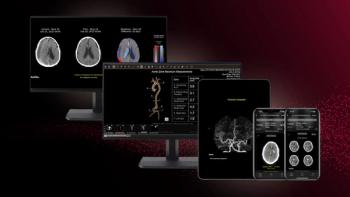
Healthcare consumers receive dose of Image Gently
The Alliance for Radiation Safety in Pediatric Imaging has developed a new set of Image Gently brochures for distribution in physicians’ offices to help parents appreciate the risks and benefits of medical imaging and to track their children’s imaging histories.
The Alliance for Radiation Safety in Pediatric Imaging has developed a new set of Image Gently brochures for distribution in physicians' offices to help parents appreciate the risks and benefits of medical imaging and to track their children's imaging histories.
The initiative adds a new dimension to the alliance. Since its formation in January 2008, the alliance has reached out to technologists, imaging physicists, and radiologists to communicate the need to minimize radiation doses from pediatric CT scans to reduce the risks associated with cumulative exposure.
The Image Gently program has been expanded to pediatric healthcare agencies, imaging equipment vendors, and healthcare consumers. The campaign published two brochures and an imaging record card in February, and the alliance has urged pediatricians and other referring physicians to pass the material along to parents.
The brochures,
Parents can use the
Raising awareness among imagers about radiation issues in children undergoing CT scans is the central mission of Image Gently, said Dr. Donald P. Frush, chair of the American College of Radiology Pediatric Commission and a member of the alliance's steering committee. Reaching out to consumers and healthcare providers who order the studies is just as important, however, because they need to discuss what these imaging exams entail and the risks involved.
"Information was tailored to those audiences," Frush said.
The imaging record card was designed as a rough gauge for a patient's exposure history. It will not contain detailed technical information, such as dosage, but instead will list the date and location of the imaging facility where the exam took place. Tracking the number of imaging exams children are exposed to keeps physicians aware and helps them decide if more studies are necessary. Tracing the location helps providers find where these studies are stored.
The imaging record card accomplishes two goals, according to Frush. It tracks dosage estimates, and it raises parental awareness about the importance of radiation exposure for consultations with their children's physicians about the risks and benefits of proposed imaging procedures.
Frush supports including features in the electronic medical record that would allow individuals to track their imaging studies and radiation exposure histories, though such documentation is unlikely in the U.S. any time soon. Providing consumers and their healthcare providers with an imaging record, however, helps raise awareness among parents about the imaging history of their children and lays the groundwork for the prudent use of imaging involving ionizing radiation as the children grow older, he said.
For more information from the Diagnostic Imaging and SearchMedica archives:
'Image Gently' program expands beyond pediatricsImage Gently alliance pushes pediatric radiation dose standardsPediatric imagers put dose campaign on the roadImage Gently alliance seeks to cut pediatric radiation
Newsletter
Stay at the forefront of radiology with the Diagnostic Imaging newsletter, delivering the latest news, clinical insights, and imaging advancements for today’s radiologists.



























